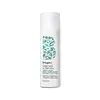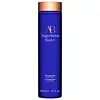What's inside
What's inside
 Key Ingredients
Key Ingredients

 Benefits
Benefits

 Concerns
Concerns

 Ingredients Side-by-side
Ingredients Side-by-side

Water
Skin ConditioningSodium Cocoyl Isethionate
CleansingLauramidopropyl Betaine
CleansingGlycerin
HumectantSodium C14-16 Olefin Sulfonate
CleansingCocamidopropyl Hydroxysultaine
CleansingCoffea Arabica Seed Oil
MaskingCopper Tripeptide-34
Skin ConditioningPanax Ginseng Root Extract
EmollientBiotin
AntiseborrhoeicCoconut Acid
CleansingLeuconostoc/Radish Root Ferment Filtrate
AntimicrobialSodium Methyl Cocoyl Taurate
CleansingSodium Isethionate
CleansingCitric Acid
BufferingAloe Barbadensis Leaf Juice
Skin ConditioningCaffeine
Skin ConditioningPropanediol
SolventLindera Strychnifolia Root Extract
Skin ConditioningTocopheryl Acetate
AntioxidantUbiquinone
AntioxidantGlycine
BufferingLarix Europaea Wood Extract
HumectantSodium Metabisulfite
AntioxidantCamellia Sinensis Leaf Extract
AntimicrobialZinc Chloride
AntimicrobialSodium Hydroxide
BufferingParfum
MaskingCaprylhydroxamic Acid
Benzyl Alcohol
PerfumingWater, Sodium Cocoyl Isethionate, Lauramidopropyl Betaine, Glycerin, Sodium C14-16 Olefin Sulfonate, Cocamidopropyl Hydroxysultaine, Coffea Arabica Seed Oil, Copper Tripeptide-34, Panax Ginseng Root Extract, Biotin, Coconut Acid, Leuconostoc/Radish Root Ferment Filtrate, Sodium Methyl Cocoyl Taurate, Sodium Isethionate, Citric Acid, Aloe Barbadensis Leaf Juice, Caffeine, Propanediol, Lindera Strychnifolia Root Extract, Tocopheryl Acetate, Ubiquinone, Glycine, Larix Europaea Wood Extract, Sodium Metabisulfite, Camellia Sinensis Leaf Extract, Zinc Chloride, Sodium Hydroxide, Parfum, Caprylhydroxamic Acid, Benzyl Alcohol
Water
Skin ConditioningSodium Cocoyl Isethionate
CleansingSodium Methyl Cocoyl Taurate
CleansingDecyl Glucoside
CleansingCoco-Betaine
CleansingCoco-Glucoside
CleansingErythritol
HumectantPanthenol
Skin ConditioningSodium Chloride
MaskingGlycerin
HumectantCitric Acid
BufferingHydrolyzed Vegetable Protein
Skin ConditioningHydroxypropyl Guar Hydroxypropyltrimonium Chloride
Saccharide Isomerate
HumectantPotassium Sorbate
PreservativeSodium Benzoate
MaskingHydrolyzed Rice Protein
Skin ConditioningLepidium Meyenii Root Extract
Skin ConditioningMaltodextrin
AbsorbentAcacia Concinna Fruit Extract
Skin ConditioningMelia Azadirachta Leaf Extract
Skin ConditioningNasturtium Officinale Extract
PerfumingTropaeolum Majus Extract
AntimicrobialSodium Citrate
BufferingCamellia Sinensis Leaf Extract
AntimicrobialHydrogenated Lecithin
EmulsifyingTocopheryl Acetate
AntioxidantXanthan Gum
EmulsifyingAmber Extract
Skin ConditioningSorbic Acid
PreservativeBambusa Arundinacea Stem Extract
Skin ConditioningAlanyl Glutamine
HumectantArginine
MaskingOligopeptide-177
Phenylalanine
MaskingSisymbrium Irio Seed Oil
MaskingWater, Sodium Cocoyl Isethionate, Sodium Methyl Cocoyl Taurate, Decyl Glucoside, Coco-Betaine, Coco-Glucoside, Erythritol, Panthenol, Sodium Chloride, Glycerin, Citric Acid, Hydrolyzed Vegetable Protein, Hydroxypropyl Guar Hydroxypropyltrimonium Chloride, Saccharide Isomerate, Potassium Sorbate, Sodium Benzoate, Hydrolyzed Rice Protein, Lepidium Meyenii Root Extract, Maltodextrin, Acacia Concinna Fruit Extract, Melia Azadirachta Leaf Extract, Nasturtium Officinale Extract, Tropaeolum Majus Extract, Sodium Citrate, Camellia Sinensis Leaf Extract, Hydrogenated Lecithin, Tocopheryl Acetate, Xanthan Gum, Amber Extract, Sorbic Acid, Bambusa Arundinacea Stem Extract, Alanyl Glutamine, Arginine, Oligopeptide-177, Phenylalanine, Sisymbrium Irio Seed Oil
Ingredients Explained
These ingredients are found in both products.
Ingredients higher up in an ingredient list are typically present in a larger amount.
Camellia Sinensis Leaf Extract is derived from the leaves of the tea plant. Black tea, green tea, and oolong tea are all harvested from this plant.
This ingredient has many skin benefits:
This ingredient contains polyphenols, a strong antioxidant. Antioxidants help fight off molecules that damage skin cells.
On top of that, the antioxidants in green tea neutralize free-radicals from the sun. This gives the skin some extra UV protection, but should not replace sunscreen.
Many components of tea have anti-inflammatory properties.
Polyphenols and L-theanine help soothe the skin and reduce irritation. The caffeine in Camellia Sinensis Leaf Extract helps calm inflamed blood vessels.
Other compounds found in tea include: Vitamin Bs, linoleic acid, magnesium, calcium, iron, and zinc.
Research has shown both drinking Camellia Sinensis Leaf Tea and applying it to the skin can help boost skin elasticity and hydration. Studies also show using tea extract may reduce sebum, or oil, production.
Learn more about Camellia Sinensis Leaf ExtractCitric Acid is an alpha hydroxy acid (AHA) naturally found in citrus fruits like oranges, lemons, and limes.
Like other AHAs, citric acid can exfoliate skin by breaking down the bonds that hold dead skin cells together. This helps reveal smoother and brighter skin underneath.
However, this exfoliating effect only happens at high concentrations (20%) which can be hard to find in cosmetic products.
Due to this, citric acid is usually included in small amounts as a pH adjuster. This helps keep products slightly more acidic and compatible with skin's natural pH.
In skincare formulas, citric acid can:
While it can provide some skin benefits, research shows lactic acid and glycolic acid are generally more effective and less irritating exfoliants.
Most citric acid used in skincare today is made by fermenting sugars (usually from molasses). This synthetic version is identical to the natural citrus form but easier to stabilize and use in formulations.
Read more about some other popular AHA's here:
Learn more about Citric AcidGlycerin is already naturally found in your skin. It helps moisturize and protect your skin.
A study from 2016 found glycerin to be more effective as a humectant than AHAs and hyaluronic acid.
As a humectant, it helps the skin stay hydrated by pulling moisture to your skin. The low molecular weight of glycerin allows it to pull moisture into the deeper layers of your skin.
Hydrated skin improves your skin barrier; Your skin barrier helps protect against irritants and bacteria.
Glycerin has also been found to have antimicrobial and antiviral properties. Due to these properties, glycerin is often used in wound and burn treatments.
In cosmetics, glycerin is usually derived from plants such as soybean or palm. However, it can also be sourced from animals, such as tallow or animal fat.
This ingredient is organic, colorless, odorless, and non-toxic.
Glycerin is the name for this ingredient in American English. British English uses Glycerol/Glycerine.
Learn more about GlycerinSodium cocoyl isethionate is a natural ingredient from coconut oil. It is an ultra gentle cleanser that gives a nice foam without drying the skin or impacting the skin barrier.
The amount of foam created depends on the amount of sodium cocoyl isethionate used in the product.
This ingredient also helps improve the spreadability of a product.
Learn more about Sodium Cocoyl IsethionateThis gentle cleansing and foaming ingredient is known for leaving a smooth feeling in skin and hair. It is made using coconut oil.
According to the manufacturer, it is soluble in water and has resistance to hard water, acid, and alkali.
Due to its coconut base, it may not be Malassezia folliculitis safe.
Learn more about Sodium Methyl Cocoyl TaurateTocopheryl Acetate is AKA Vitamin E. It is an antioxidant and protects your skin from free radicals. Free radicals damage the skin by breaking down collagen.
One study found using Tocopheryl Acetate with Vitamin C decreased the number of sunburned cells.
Tocopheryl Acetate is commonly found in both skincare and dietary supplements.
Learn more about Tocopheryl AcetateWater. It's the most common cosmetic ingredient of all. You'll usually see it at the top of ingredient lists, meaning that it makes up the largest part of the product.
So why is it so popular? Water most often acts as a solvent - this means that it helps dissolve other ingredients into the formulation.
You'll also recognize water as that liquid we all need to stay alive. If you see this, drink a glass of water. Stay hydrated!
Learn more about Water